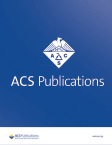摘要 PO4-26-09:人工智能在乳腺癌 HER2 IHC 0 和 1+ 评分中的优势
IF 3.4
Q2 PUBLIC, ENVIRONMENTAL & OCCUPATIONAL HEALTH
引用次数: 0
摘要
背景:曲妥珠单抗(Trastuzumab deruxtecan)极大地改变了HER2低分化乳腺癌的治疗方法,强调了准确区分HER2免疫组化(IHC)0分和1+分的必要性。然而,目前现实世界中 HER2 IHC 0 和 1+ 评分的准确性并不高。人工智能(AI)已成为提高判读准确性的潜在解决方案。我们开发了一种基于全切片图像(WSI)的人工智能算法,用于定量评估HER2表达及其在解释HER2 IHC 0和1+评分中的作用。方法:我们的三阶段人工智能分析框架包括分割肿瘤区域(不包括导管原位癌)、根据膜染色模式检测肿瘤细胞并对其进行分类,以及根据2018 ASCO/CAP HER2指南对HER2 IHC评分进行分级。该人工智能工具使用由经验丰富的病理学家标注的 6012 个补丁进行了训练。使用由 265 张切片组成的测试数据集进行了性能评估。测试数据集共包含 141 张 HER2 IHC 切片(27 张 IHC 0 和 114 张 IHC 1+),这些切片来自 2021 年在复旦大学上海肿瘤中心确诊的浸润性乳腺癌患者。两名经过预培训的专家病理学家独立对 HER2 切片进行重检,然后使用人工智能工具进行分析。所有不一致病例还由第三位资深病理学家进行复查。我们评估了病理学家之间的观察者间一致性以及病理学家与 AI 解释结果之间的一致性。我们还探讨了病理学家对 HER2 的解释不一致或不准确的潜在范围。结果HER2 AI 算法在解释所有级别的 HER2 表达时都表现出很高的性能,总体卡帕值为 0.85。对于 HER2 IHC 0 和 1+ 病例,人工智能模型显示出较高的敏感性(0.839 和 0.914)和特异性(0.983 和 0.890)(表 1)。经过重新评分后,51 个病例被重新分类为 IHC 0,90 个病例被重新分类为 IHC 1+。历史结果与重新评分结果的总体一致率为 73.05%(103/141)。人工智能和重新评分结果的一致率为 91.49%(129/141)(表 2),表明人工智能模型和训练有素的病理学家的解释能力相当。两位病理学家的观察者间一致率为 83.69%(118/141),IHC 0 的一致率为 88.23%(45/51),IHC 1+ 的一致率为 81.11%(73/90)。在分析 IHC 0 和 IHC 1+ 不一致的病例(n=12)时,我们检查了 AI 提供的弱表达和不完全表达的百分比。在 12 个病例中有 9 个病例中,人工智能提供的结果与第三位资深病理学家相同,这表明人工智能可以在此范围内协助解释。我们将 2.83% 到 24.98% 的范围确定为 "灰色地带",在这一范围内,即使是训练有素的病理学家也会提供不一致的结果。结论我们的研究表明,基于人工智能的工具在对 HER2 IHC 0 和 1+ 进行评分时表现出色。人工智能模型在解释 HER2 表达方面的能力与训练有素的病理学家不相上下。此外,我们还在病理学家中发现了一个 "灰色地带",凸显了人工主观判读的局限性。在这一区域内,人工智能的帮助可能有助于减少主观性差异。表 1.病理学家解读与人工智能解读 HER2 免疫组化之间的相关性。表 2.病理学家重新评分与 HER2 免疫组化人工智能读数之间的相关性。引用格式:李明、吕红、赵一志、朱成禄、李汉生、林明珍、杨文涛。人工智能在乳腺癌HER2 IHC 0和1+评分中的优势[摘要].In:2023 年圣安东尼奥乳腺癌研讨会论文集;2023 年 12 月 5-9 日;德克萨斯州圣安东尼奥。费城(宾夕法尼亚州):AACR; Cancer Res 2024;84(9 Suppl):Abstract nr PO4-26-09。本文章由计算机程序翻译,如有差异,请以英文原文为准。
Abstract PO4-26-09: The Advantage of Artificial-Intelligence in HER2 IHC 0 and 1+ Scoring in Breast Cancer
Background:
Trastuzumab deruxtecan has substantially changed the treatment of HER2-low breast cancer, emphasizing the need for accurate differentiation between HER2 immunohistochemistry (IHC) scores of 0 and 1+. However, the current accuracy of HER2 IHC 0 and 1+ scoring in real-world is inadequate. Artificial intelligence (AI) has emerged as a potential solution to improve interpretation accuracy. We developed an AI algorithm based on whole slide images (WSI) to quantitatively assess HER2 expression and its role in interpreting HER2 IHC scores of 0 and 1+.
Methods:
Our three-phase AI analysis framework involved segmenting tumor areas (excluding ductal carcinoma in situ), detecting and classifying tumor cells based on membrane staining patterns, and grading HER2 IHC scores according to the 2018 ASCO/CAP HER2 guideline. The AI tool was trained using 6012 patches annotated by experienced pathologists. Performance evaluation was conducted using a test dataset comprising 265 slides. A total of 141 HER2 IHC slides (27 IHC 0 and 114 IHC 1+) from patients diagnosed with invasive breast cancer at Fudan University Shanghai Cancer Center in 2021 were included. Two pretrained expert pathologists independently rescored the HER2 slides, followed by analysis using the AI tool. All inconsistent cases were also reviewed by a third senior pathologist. Interobserver agreement between the pathologists and concordance between the pathologists and the AI interpretation results were assessed. We also explored potential ranges where HER2 interpretation by pathologists exhibited inconsistency or inaccuracy.
Results:
The HER2 AI algorithm showed high performance in interpreting all levels of HER2 expression, with an overall kappa value of 0.85. For HER2 IHC 0 and 1+ cases, the AI model demonstrated high sensitivities (0.839 and 0.914) and specificities (0.983 and 0.890) (Table 1). After the rescoring process, 51 cases were reclassified as IHC 0 and 90 cases as IHC 1+. The overall agreement rate between the historical and re-scoring results was 73.05% (103/141). The agreement rate between the AI and re-scoring results was 91.49% (129/141) (Table 2), indicating comparable interpretation capabilities between the AI model and well-trained pathologists. The interobserver agreement between the two pathologists was 83.69% (118/141), with agreement rates of 88.23% (45/51) for IHC 0 and 81.11% (73/90) for IHC 1+. Analyzing the inconsistent cases (n=12) between IHC 0 and IHC 1+, we examined the percentage of weak and incomplete expression provided by the AI. In 9 out of 12 cases, the AI provided the same results as the third senior pathologist, suggesting that AI could assist in interpretation within this range. We identified a range of 2.83% to 24.98% as a "grey-zone," where even well-trained pathologists provided inconsistent results.
Conclusion:
Our study demonstrates the excellent performance of an AI-based tool for scoring HER2 IHC 0 and 1+. The AI model exhibits comparable capabilities to well-trained pathologists in interpreting HER2 expression. Additionally, we identified a "grey-zone" among pathologists, highlighting the limitations of manual subjective interpretation. AI assistance within this zone may help mitigate subjective variations.
Table 1. Correlation between pathologist read and AI read of HER2 immunohistochemistry.
Table 2. Correlation between pathologist rescoring and AI read of HER2 immunohistochemistry.
Citation Format: Ming Li, Hong Lv, Yizhi Zhao, Chenglu Zhu, Hansheng Li, Mingzhen Lin, Wen-Tao Yang. The Advantage of Artificial-Intelligence in HER2 IHC 0 and 1+ Scoring in Breast Cancer [abstract]. In: Proceedings of the 2023 San Antonio Breast Cancer Symposium; 2023 Dec 5-9; San Antonio, TX. Philadelphia (PA): AACR; Cancer Res 2024;84(9 Suppl):Abstract nr PO4-26-09.
求助全文
通过发布文献求助,成功后即可免费获取论文全文。
去求助
来源期刊

ACS Chemical Health & Safety
PUBLIC, ENVIRONMENTAL & OCCUPATIONAL HEALTH-
CiteScore
3.10
自引率
20.00%
发文量
63
期刊介绍:
The Journal of Chemical Health and Safety focuses on news, information, and ideas relating to issues and advances in chemical health and safety. The Journal of Chemical Health and Safety covers up-to-the minute, in-depth views of safety issues ranging from OSHA and EPA regulations to the safe handling of hazardous waste, from the latest innovations in effective chemical hygiene practices to the courts'' most recent rulings on safety-related lawsuits. The Journal of Chemical Health and Safety presents real-world information that health, safety and environmental professionals and others responsible for the safety of their workplaces can put to use right away, identifying potential and developing safety concerns before they do real harm.
 求助内容:
求助内容: 应助结果提醒方式:
应助结果提醒方式:


